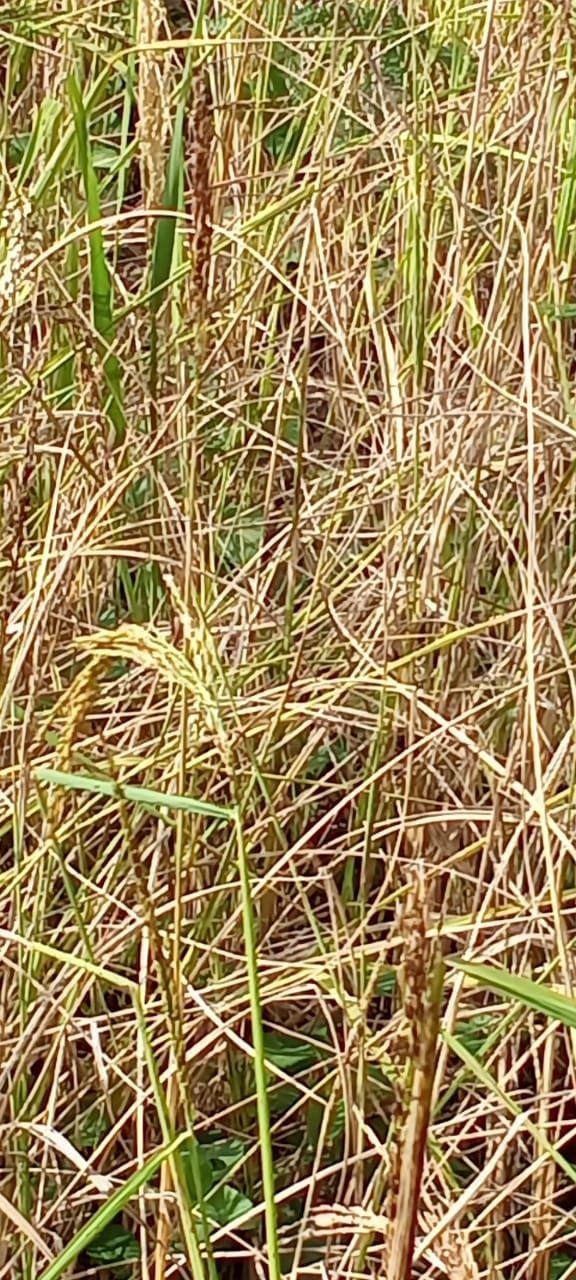In this photo taken August 3, a jhum field is seen ripe with limited affected rice spikelet due, which farmers maintain, is due to deficient rains. (Photo: By Special Arrangement)

Morung Express News
Dimapur | August 26
The State Government in June informed of a ‘drought-like situation’ in Nagaland due to erratic weather pattern and estimated agriculture and horticulture productivity would be significantly affected.
Thereafter in a presentation to the State Government titled ‘Drought-Like Situation: Deficient Rainfall 2021’ dated July 15, the Department of Agriculture (DoA) gave a detailed information regarding the overall impact as well as department’s intervention till then.
This has resulted in acute water scarcity and has directly resulted in poor germination and wilting of crops and 72,664 hectares (Ha) of jhum fields covering 915 villages are affected, the DoA said.
Water scarcity indirectly resulted in Fall Armyworm (FAW) infestation in maize from last week of March and 3048.45 ha and 334 villages were affected.
Intervention by the department brought about moderate control, it maintained.
The water scarcity also resulted in poor quality of harvested products and reduced productivity while delaying land preparation & sowing of the Terrace Rice cultivation (TRC)/Wet Rice Cultivation (WRC), it noted.
Only 40 percent of transplanting in targeted area under WTRC/TRC has been achieved, it added.
Departmental Intervention & Advisories
Meanwhile, the DoA maintained the department has had been making various intervention as well as issue advisories to lessen the impact.
Among others, these included:
• Change in crop sequence/cropping system & varietal replacement
• Re-sowing or gap filling for poor germinated Jhum
• Local land races for Jhum paddy & maize intercropped with legumes (soybean), oil seeds (sesame)
• Short to Medium duration varieties for TRC paddy in uplands
• Late sowing variety for WTRC in valleys and plains
• Compensatory crop like soybean/mung/black gram etc if monsoon is further delayed
• Mulching with local bio-mass through-out the cropping period for in situ moisture conservation
• Summer ploughing, construction of check dams, compartmental bunding and RWH (farm pond).
The DoA then informed that a ‘District Wise Crop Calendar’ was also awaiting release. It was eventually release on July 27.
Aimed at serving as a field guidebook for all the stakeholders and to “prepare for any eventualities and calamities including policy formulation,’ the calendar was released on July 27. It included information on seasonal activities advocated during crop season by farmers, consisting of both traditional as well as the improved cultivation method.
When The Morung Express contacted on August 26, a DoA official informed that the July 15 presentation is still the standing status and that the Department is awaiting data and status from the districts and subdivisions of recent field situation.
Read Related Reports:
Amid deficient rainfall, Nagaland’s sole water reservoir below ‘normal’ storage
DEFICIENT RAINFALL IN NAGALAND-II: Possibility of water ‘scarcity’ high in winter
Deficient rainfall in Nagaland-I: Farmers suffering from losses





.jpg)
